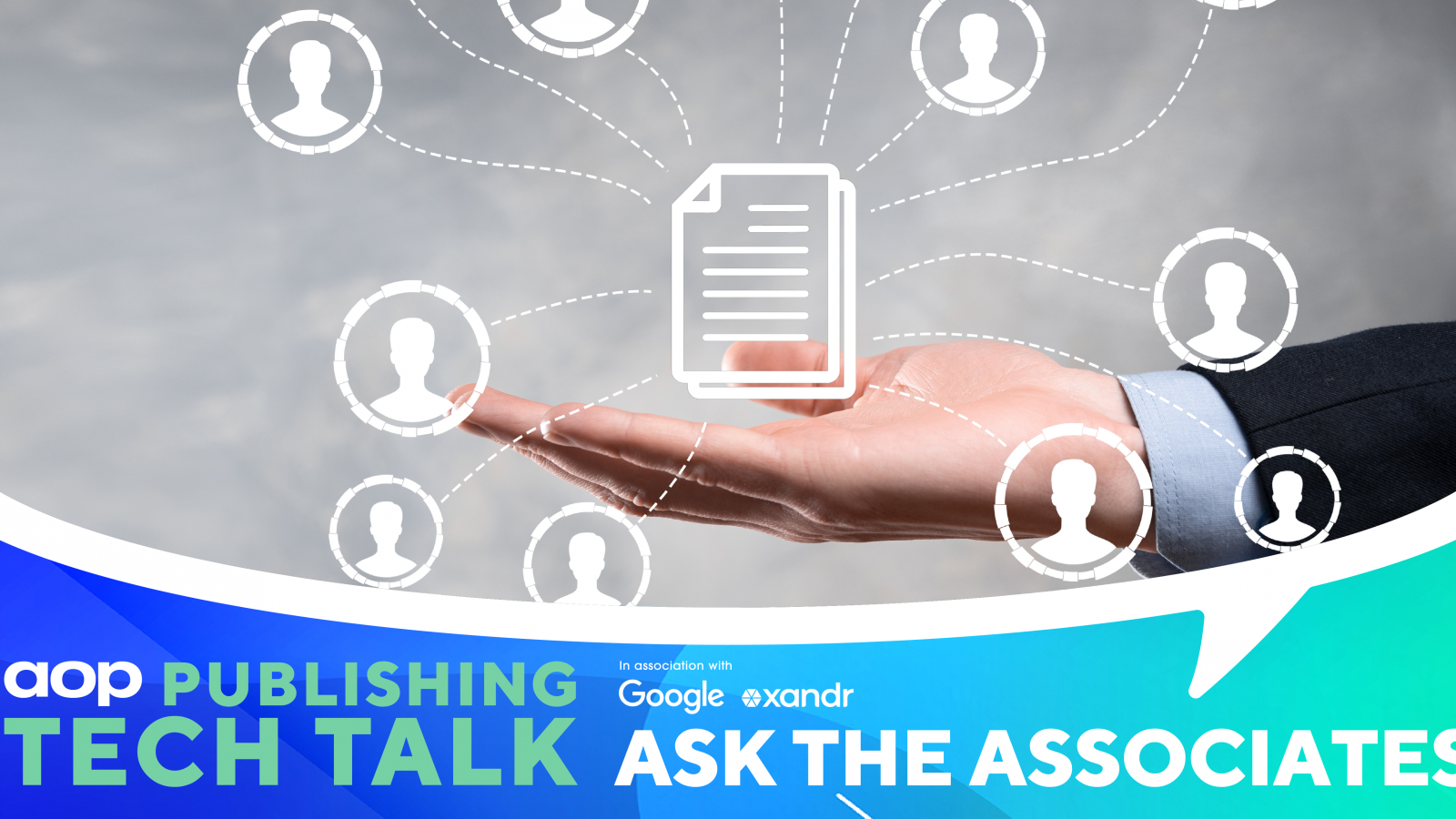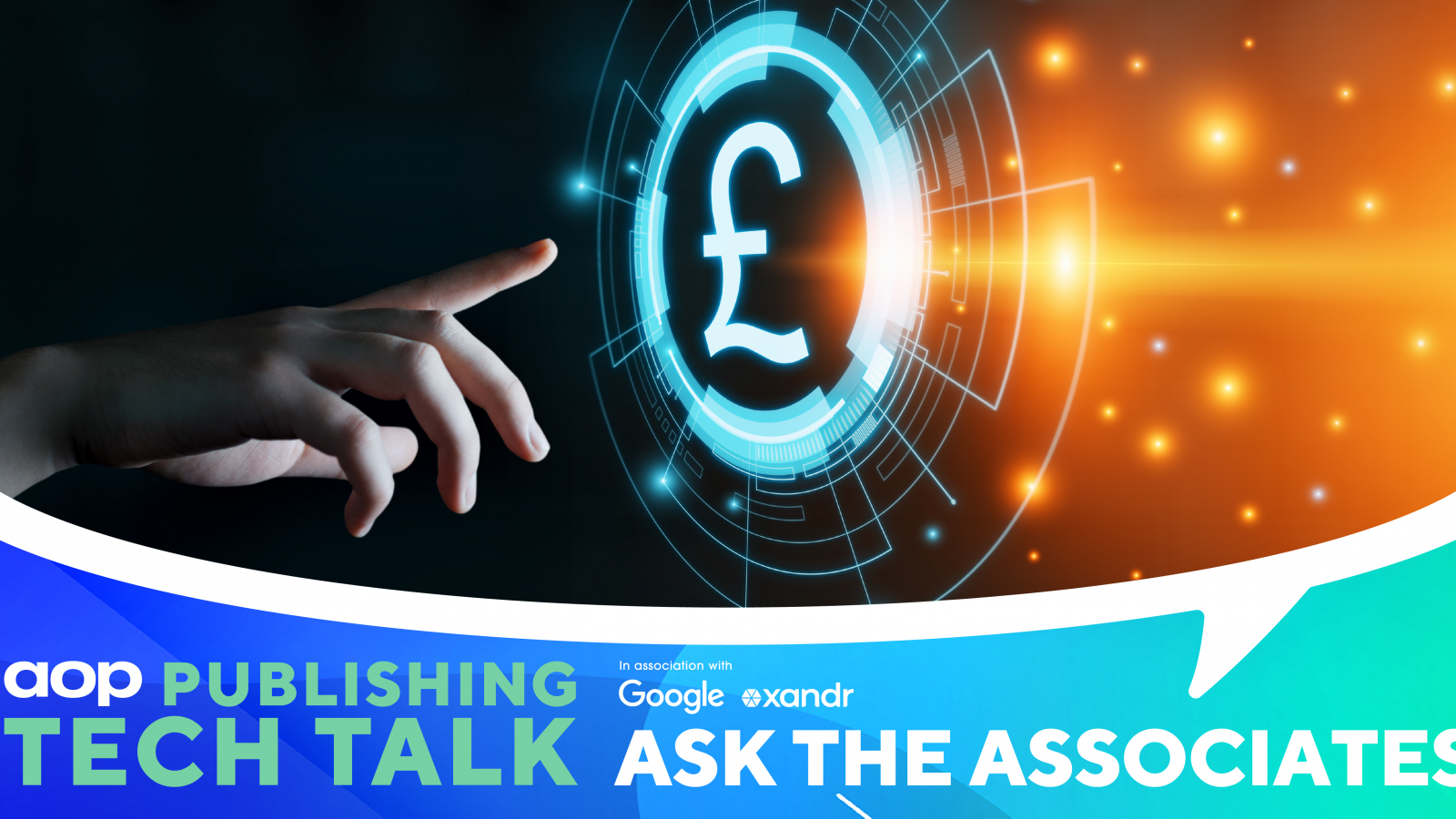
Nine predictions for the future of the programmatic marketplace
Published: 08 Oct 2021
Adland is always preparing for the next big thing. And while the introduction of programmatic marketplaces revolutionised advertising, new awareness around privacy concerns, audience data, and the end user experience suggest that the programmatic marketplace of 2025 could look radically different. Since Day 2 of the AOP Publishing Tech Talk is dedicated to helping publishers win in the advertising marketplace, we reached out to our Associate members to get their predictions on how the programmatic marketplace will continue to evolve – and how publishers can prepare accordingly…
PREDICITON 1: RIP to programmatic as we know it.
By 2025, programmatic as we know it will be gone. User-centric decisioning where user-ID is the most valuable dimension in a bid-request will be gone, with the pool of accessible individual ID’s set to get smaller and regulations around data privacy tightening.
To address the challenges of the shrinking audience pool, the industry is rushing out solutions, based on context and semantic data, but they lack audience intelligence. At the same time, some companies are holding onto the old way of targeting, clinging to IDs and cookies to help them conduct personalization. Buyers will be forced to rely on a new class of technology, able to meet the performances advertisers demand, while respecting user privacy. And they should not have to wait for 2025.
Fabien Magalon, Chief Supply Officer, Ogury
PREDICTION 2: Programmatic will be the default infrastructure for digital advertising.
The programmatic marketplace is expected to grow exponentially by 2025. Due to the wide adoption of digital technologies and revenue-producing opportunities, programmatic is on the road to becoming the default infrastructure for digital advertising.
However, in order to prepare for these changes and the challenges it will present, publishers should be proactively building out their buy-side relationships so they can engage directly with agencies, DSPs and brands. Publishers also need to focus on protecting and refining their first-party data, as well as their targeting strategies. Furthermore, publishers should look at ensuring ad technology is set up for transparency and yield, in order to maximise their revenue without sacrificing either visibility of their trading partners or the user experience on their sites.
Ryan Afshar, Head of Publishers, UK, LiveRamp
PREDICTION 3: Ad exchanges and publishers will work together to build back consumer trust
For all the big media stories and reactions that happened in and around the digital advertising industry in the past few years, one common thread emerged: consumer trust in our industry is waning. For the health of the industry at large in the next five years, regaining trust is going to be key. By working together, publishers and ad exchanges can utilise technology and best practices to regain consumer faith in a way that's sustainable and better informed about their interests.
Fully addressable, people-based marketing can be activated in a way that aligns with user preferences around privacy. And while the publisher works with their readers to determine the right value exchange for their content, ad exchanges will work to maximise the value of that increasingly precious first-party data via safe and transparent programmatic exchanges.
Ad exchanges can also help publishers create a better user experience for their audience. They can provide insight into user preferences and activity so that publishers can better cater to those reader preferences, to inform both future content and commercial strategies. Consumer trust is tomorrow’s digital currency and ad exchanges and publishers should work together to build trusted environments for the consumer in a way that ensures meaningful and continued growth.
Luke Fenney, VP, Global Publisher Sales, Index Exchange
PREDICTION 4: Publishers will be increasingly able to dictate the terms of trading.
Two things will happen. First, power will shift towards the publisher because third party data disappears, and publisher-side data will be of higher value. This means that publishers will be increasingly able to dictate the terms of trading, and to support more effective trading through curated marketplaces controlled by them. Second, as curated marketplaces grow in numbers to support more transparent and cost-effective trading, publishers need to improve their ability to work with multiple demand partners simultaneously with client- and server-side header bidding support.
Stian Remaad, CEO, Adnuntius
PREDICTION 5: New partnerships and the adoption of curation will continue to reshape the advertising landscape.
Without doubt, programmatic needs to evolve in a post-cookie world. The role of identity within the bid stream needs to be examined and the ownership and value creation of identity needs to move to those who hold the relationship with the consumer. Privacy needs to become intrinsic to how programmatic operates.
Cohorts will be critical, as will the adoption of curation.
Publishers need to invest in partnerships that allow them to maximise their first-party value, drive privacy preserving solutions and adopt progressive ways of working, instead of trying to cling on to the status quo. Web 3.0 will come to programmatic, and it will fundamentally change where the value sits and who has control over it. This will be a positive thing for publishers.
Stuart Colman, VP of Sales, InfoSum
PREDICTION 6: Contextual advertising – and even direct deals – could become new solutions to plug the gap created by the demise of third-party cookies.
The future of the programmatic marketplace is likely to look drastically different by 2025, impacted largely by the deprecation of third-party cookies. Publishers should be focusing on a few key points over the next few years to prepare themselves:
- First, the loss of third-party cookies will challenge performance and efficiency of advertising. To prepare for this reality, publishers should start testing strategies now to compare and contrast first- vs. third-party data and define what reasonable performance might look like in the future.
- Additionally, publishers should understand the value of the data they have and, on the flip side, the data they might lack. Strong data is a competitive advantage that should be an important part of the conversation, so they should be prepared to demonstrate this value to advertisers.
- Direct deals could also be a way for publishers to connect with strategic clients/advertisers. Publishers should evaluate what this commercial opportunity could look like.
- Finally, publishers should consider the role of contextual as an option to augment segments and performance.
There’s so much information and discussion in the industry right now; publishers should take advantage of this, feel empowered by it and be creative with it. Although it’s a major shift, there are plenty of options to become smarter about marketing and advertising through this transition.
Joanna Catalano, Chief Growth Officer, Piano
PREDICTION 7: Content and context will be king – and collaboration will come to the fore.
Without the cookie, content and context will be king, and publishers will play the most important role owning the relationship with the consumer. Programmatic marketplaces are going ‘back to basics’ and by 2025 we’ll see the power of collaboration. Strong relationships between buyers and sellers are going to be essential to navigate the changing identity landscape. We’re starting to see consolidation in the number of supply paths a buyer chooses to reach the supply they want as they opt for maximum efficiency, transparency and control.
Publishers can prepare for this by thinking through the best way they can work with marketers to monetise their first-party data assets, what makes their first-party data unique and how they can facilitate access to this data easily and at scale. It’s important for publishers to work closely with their tech partners to fully understand the impact of the various solutions on both their business and how they handle their most valuable asset.
Michael Simpkins, Marketplace Commercial Lead, Xandr
PREDICTION 8: Including industry standard data will allow programmatic to succeed.
With transparency and objectivity at the top of clients’ wish-lists, the programmatic marketplace should only thrive with the inclusion of recognised industry standard data in the mix and available for use in selection of audience segmentation.
Ian Dowds, CEO, UKOM
PREDICTION 9: Transparency will become more important within the programmatic marketplace.
The programmatic world is getting more and more complex. New companies will come out in order to fill the gap with post-cookie world and the publisher will probably add more SSPs and Industry ID solution on their stack. As a result, I would predict we would see the following changes:
- An increase in server-side calls (such as TAM, Open Bidding, PSP, Rubicon server)
Emile Breton – Head of Product, Pubstack
All this week, the AOP Publishing Tech Talk is giving publishers the information download they need to grow their businesses through the creative and effective application of tech solutions.
Here’s everything that’s happening on Day 2 – and how you can join in with the discussions:
- How do you identify and optimise your most valuable inventory? Don’t miss Sovrn’s showcase of their latest tool to help you identify, target, and price your most valuable ad placements. WATCH THE DEMONSTRATION FROM 10AM.
- Tune in to a conversation between our Managing Director, Richard Reeves, and Danny Spears at the Ozone Project as they explore how a proprietary approach fits into the mix for publishers, and what advice Danny has for publishers developing proprietary tech across any areas of their business. LISTEN TO THE PODCAST FROM 11AM.
- Join LiveRamp, our premium sponsor for the day, and thought leaders from the Telegraph, Global, and Assembly, as they explore people-based marketing and how you can take advantage of this opportunity as a publisher. REGISTER HERE TO JOIN THIS WEBINAR FROM 2-3PM TODAY.
- How do you maximise the value of your ad inventory? Don’t miss this partner event where senior representatives from Pubstack will gives you the tools to leverage granular analytics and advanced optimisations to get an edge in the monetisation process – without increasing complexity of the existing ad stack. REGISTER HERE TO JOIN THE WEBINAR AT 3.30-4.30PM TODAY.
Or check out everything we have planned for the rest of the week HERE!
Categories: Ask the Associates



